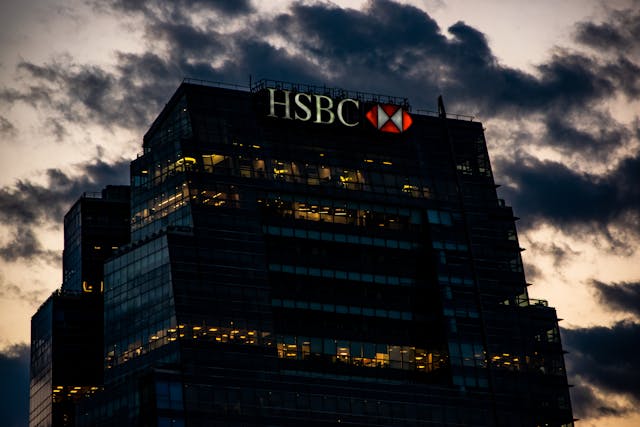HSBC, one of the world’s best known banking and financial services organizations, has built its reputation through a carefully crafted marketing strategy. This strategy not only positions HSBC as a leader in the financial sector but also ensures the brand resonates with diverse audiences across the globe. For marketing professionals looking to glean insights from a successful brand, HSBC’s approach offers valuable lessons in global branding, digital innovation, and customer-centric campaigns.
Understanding HSBC’s Global Brand Identity
At the core of HSBC’s marketing strategy is its commitment to being the world’s local bank. This slogan encapsulates the bank’s dual focus on global reach and local relevance. HSBC operates in more than 60 countries, and its marketing efforts are designed to bridge cultural differences while presenting a cohesive brand image.

Key Elements of HSBC’s Global Brand Strategy
Consistency with Flexibility: HSBC maintains a consistent brand message worldwide but adapts its marketing tactics to fit local contexts. This balance allows the bank to stay relevant in diverse markets while reinforcing its global identity.
Cultural Sensitivity: Understanding cultural nuances is vital for HSBC. The bank invests in extensive market research to tailor its marketing campaigns to the cultural specifics of each region, ensuring messages are respectful and resonant.
Global Themes with Local Execution: HSBC’s campaigns often revolve around global themes, such as connectivity and opportunity, but they are executed with local flavor. This approach helps the bank connect emotionally with local customers while maintaining a unified global presence.
Notable HSBC Marketing Campaigns
The “World’s Local Bank” Campaign
One of HSBC’s most iconic campaigns, “The World’s Local Bank,” effectively communicated the brand’s unique selling proposition. Launched in the early 2000s, this campaign highlighted HSBC’s global reach and local expertise through a series of print and television advertisements.
Campaign Highlights:
- Print Ads: The campaign featured a series of visually striking print ads that juxtaposed different cultural perspectives on the same subject. For instance, one ad showed the word “chicken” with three different images: a chicken, a dish, and a baby, each representing a different cultural interpretation. This clever use of imagery underscored the importance of cultural understanding, a key value for HSBC.
- Television Commercials: The TV ads followed a similar theme, portraying various cultural scenarios to emphasize HSBC’s commitment to understanding and serving local markets. These commercials resonated with audiences by showcasing real-life situations that required cultural sensitivity.
“We Are Not an Island” Campaign
In 2017, HSBC launched the “We Are Not an Island” campaign in the UK, addressing the post-Brexit sentiment. This campaign aimed to reinforce the idea of global connectivity and interdependence, aligning with HSBC’s core values.
Campaign Highlights:
- Strategic Messaging: The campaign used the metaphor of the UK not being an island in a figurative sense, emphasizing the country’s deep connections with the rest of the world. This was a bold move, considering the political climate at the time, but it resonated well with the bank’s audience.
- Integrated Media Approach: The campaign was rolled out across multiple channels, including TV, print, online, and outdoor media. The integrated approach ensured widespread reach and reinforced the campaign’s message across different touchpoints.
- Emotional Appeal: By tapping into the emotional aspects of connectivity and belonging, HSBC managed to strike a chord with its audience, fostering a sense of unity and shared purpose.
“Together We Thrive” Campaign
HSBC’s “Together We Thrive” campaign, launched in 2018, aimed to highlight the bank’s role in helping customers achieve their ambitions. This campaign marked a shift towards a more personal and aspirational message.
Campaign Highlights:
- Inspirational Stories: The campaign featured real-life stories of individuals and businesses that thrived with the support of HSBC. These stories were designed to inspire and motivate potential customers by showcasing tangible outcomes of banking with HSBC.
- Digital and Social Media: Leveraging digital platforms, HSBC created engaging content tailored for social media. This included short videos, customer testimonials, and interactive posts, enhancing the campaign’s reach and engagement.
- Customer-Centric Focus: The campaign’s emphasis on customer success and personal growth resonated deeply with audiences, reinforcing HSBC’s commitment to helping its customers thrive.
Digital Innovation in HSBC’s Marketing Strategy
In today’s digital age, HSBC has adeptly incorporated digital innovation into its marketing strategy. The bank’s digital transformation initiatives are aimed at enhancing customer experience, driving engagement, and ensuring efficient service delivery.

Key Digital Strategies:
Personalization: HSBC uses data analytics and AI to offer personalized banking experiences. By analyzing customer data, the bank can tailor its marketing messages and product offerings to meet individual needs, thereby enhancing customer satisfaction and loyalty.
Social Media Engagement: HSBC maintains an active presence on social media platforms like Facebook, Twitter, LinkedIn, and Instagram. The bank uses these channels to engage with customers, share valuable content, and address customer queries promptly.
Mobile Banking Apps: HSBC’s mobile banking apps are designed to provide a seamless and convenient banking experience. These apps include features like biometric login, real-time notifications, and financial planning tools, all of which are promoted through targeted digital marketing campaigns.
Content Marketing: HSBC invests heavily in content marketing, producing valuable and informative content for its customers. This includes articles, videos, webinars, and blogs on topics ranging from financial planning to market insights. By providing relevant content, HSBC positions itself as a trusted advisor in the financial sector.
Customer-Centric Marketing Approach
HSBC’s marketing strategy is fundamentally customer-centric, focusing on understanding and meeting customer needs. This approach involves continuous engagement with customers to gain insights and improve service delivery.
Key Tactics in Customer-Centric Marketing:
Customer Feedback: HSBC actively seeks customer feedback through surveys, focus groups, and social media interactions. This feedback is used to refine products and services, ensuring they align with customer expectations.
Customer Journey Mapping: The bank maps out the customer journey to identify key touchpoints and pain points. This helps in designing targeted marketing interventions that enhance the overall customer experience.
Loyalty Programs: HSBC offers loyalty programs that reward customers for their continued patronage. These programs include benefits like cashback, discounts, and exclusive offers, which are promoted through personalized marketing campaigns.
Sustainability and Corporate Social Responsibility (CSR)
HSBC’s marketing strategy also places a strong emphasis on sustainability and CSR. The bank’s commitment to ethical banking and social responsibility is a key component of its brand identity.
Key Initiatives:
Sustainable Finance: HSBC promotes sustainable finance by offering products and services that support environmental and social causes. This includes green bonds, sustainable investment funds, and financing for renewable energy projects.
Community Engagement: The bank engages with local communities through various CSR initiatives. This includes supporting education, healthcare, and environmental conservation projects. These initiatives are often highlighted in HSBC’s marketing campaigns to reinforce the bank’s commitment to social responsibility.
Transparent Reporting: HSBC maintains transparency in its CSR efforts by regularly publishing reports on its sustainability performance. This transparency builds trust with customers and stakeholders, enhancing the bank’s reputation.
Lessons for Marketing Professionals
HSBC’s marketing strategy offers several key lessons for marketing professionals:
- Balancing Global and Local: Achieving a balance between global consistency and local relevance is crucial for international brands. HSBC’s success lies in its ability to maintain a cohesive global brand while adapting to local markets.
- Cultural Sensitivity: Understanding and respecting cultural differences is essential for effective marketing. HSBC’s culturally nuanced campaigns demonstrate the importance of cultural sensitivity in building strong customer relationships.
- Integrated Marketing: A well-coordinated, multi-channel approach ensures that marketing messages reach a wide audience and reinforce brand identity. HSBC’s integrated campaigns show the power of combining different media channels for maximum impact.
- Customer-Centricity: Putting the customer at the center of marketing efforts leads to better engagement and loyalty. HSBC’s focus on customer needs and feedback highlights the value of a customer-centric approach.
- Digital Innovation: Embracing digital tools and platforms is key to staying relevant in today’s market. HSBC’s use of digital technology to enhance customer experience underscores the importance of digital innovation in modern marketing.
- Sustainability and CSR: Incorporating sustainability and social responsibility into marketing strategies can enhance brand reputation and foster customer trust. HSBC’s commitment to ethical banking demonstrates the positive impact of CSR on brand image.
What Makes HSBC’s Marketing Strategy Successful?
HSBC’s marketing strategy is a masterclass in blending global reach with local relevance, leveraging digital innovation, and maintaining a customer-centric focus. By carefully crafting campaigns that resonate across cultures and using technology to enhance customer experiences, HSBC has positioned itself as a leading global bank. Marketing professionals can draw inspiration from HSBC’s approach to create impactful, culturally aware, and customer-focused marketing strategies for their own brands.

